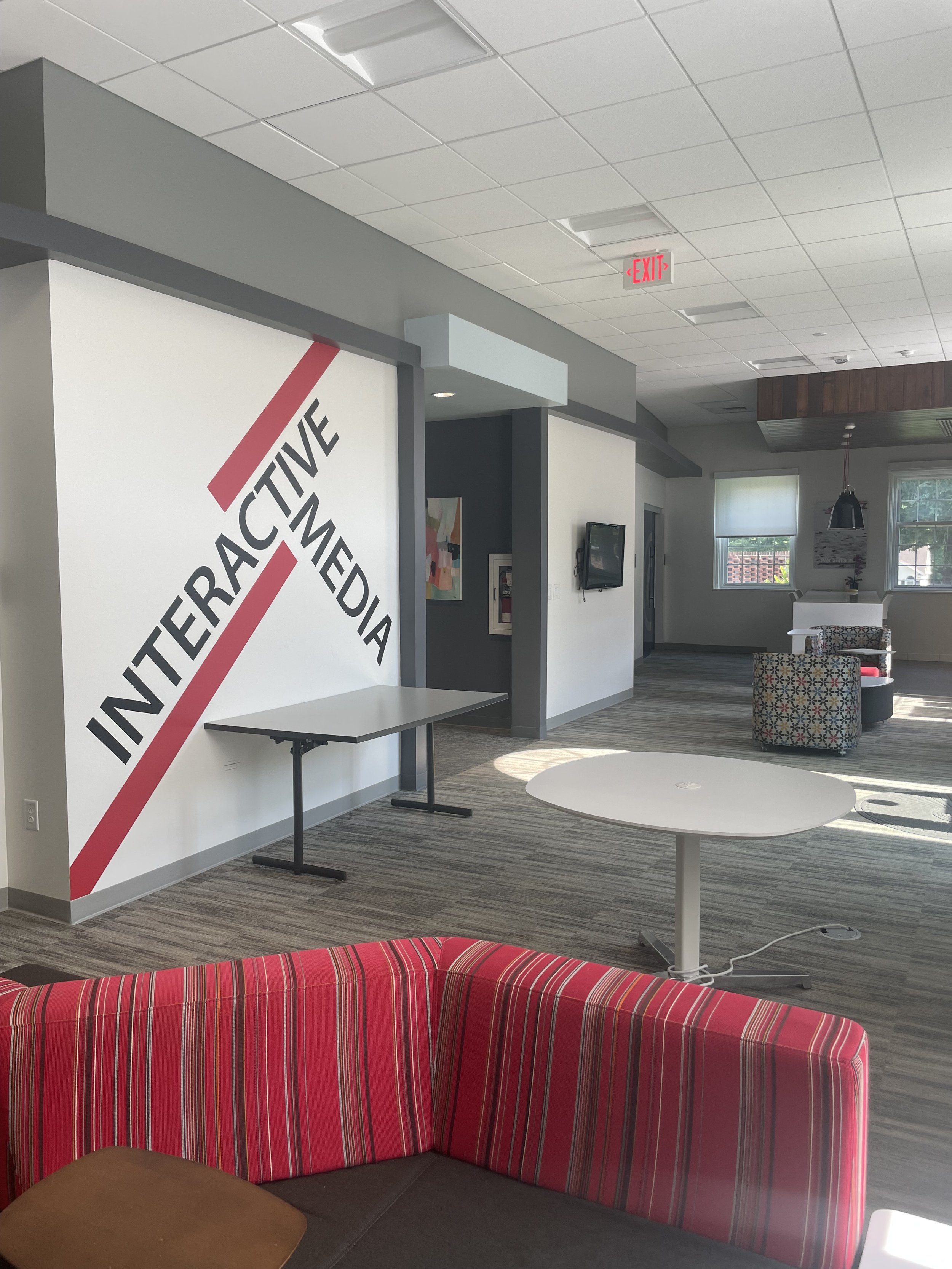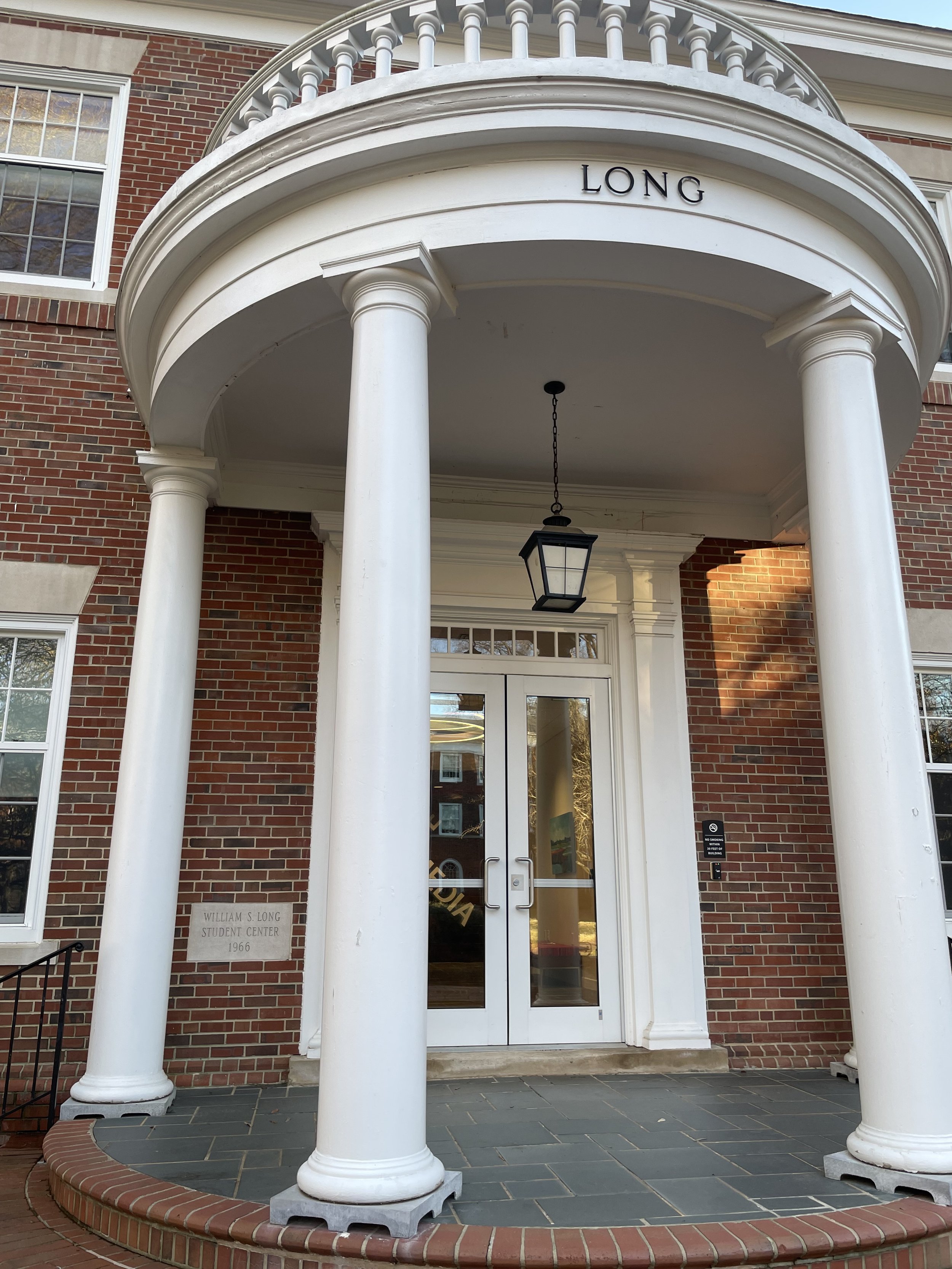American impressions: teaching technology ethics
Reflections on my time as a Fulbright Visiting Scholar at Elon University, North Carolina.
1. Elon University · 2. Flora and fauna · 3. Teaching technology ethics · 4. The sport · Coming soon: 5. Fulbright · 6. Life in the North Carolina Piedmont · 7. Future of the nation.
I teach Ethics in Interactive Media, an elective course in Elon’s now-paused MA Interactive Media. I’m not precious, so here’s my full syllabus including readings and assignments (hit me up for more detail):
Our course starts tangible and personal, covering safety and bias through case histories like the Ford Pinto, Ring doorbells, and COMPAS before linking these to core ethical principles and the theories of utilitarianism, deontology, and virtue ethics. We spend a week each on persuasive tech, privacy, and digital wellbeing, which I’ve found all mesh well with other topics. We split AI ethics into short- and long-term perspectives, before ending with practical anticipation methods and real-world application. Alongside our 3hr 20m of classroom time, I assign five hours a week of either reading or assessable work.
Assessment
Elon students prefer continuous assessment. Since I want them to practice making ethical arguments from the outset, the first three assignments are 1,000-word essays on recently covered topics.
‘Is it ever morally acceptable to knowingly release a biased algorithm?’ (Bias, justice, balance/asymmetry of harms and benefits.)
‘Should apps use ‘streaks’ to encourage habitual use?’ (Autonomy, persuasion, manipulation.)
‘Billions of people give tech firms consent to use their personal data. Given the complexity of today’s digital technologies, should we consider this consent valid?’ (Privacy, consent.)
To encourage collaboration our next assessment is a group exercise. Posing as a Meta product lead, I propose a hypothetical AI-driven dating feature that infers romantic interest and ask students to roleplay as a Meta ethics committee reviewing my proposal. You’ll notice some obviously laid pitfalls, and some attempts to mimic Big Tech language and product-centric thinking:
A student’s final project, 40% of their course grade, is a solo presentation identifying ethical concerns with an app of their choice and both recommending and justifying improvements. Students can create portfolio-worthy deliverables if they wish, but so non-designers aren’t penalised there are no marks for execution quality. What matters is whether the student spots salient issues and makes convincing arguments in the face of my robust challenges (‘Competitor X doesn’t do this, why should we?’ / ‘Isn’t complying with regulation enough?’ etc). Most students pick Insta and TikTok as expected, but a couple of niche apps are fun to handle.
Finally, a small participation grade to incentivise discussion but which ends up mostly as mark padding (see below).
Students
Most of my class are iMedia postgrads, with a skew to design and content strategy. I have a couple of undergrads from communications and engineering, but sadly there are no takers from CompSci. Just one student is male: remind me to write another time about the gender-coding of ethics in the STEM mindset. As a group, the students are sunny, curious, and generally attentive, but they’re also spooked by the market and the worrying trajectories of our world. I feel for them. It’s a tough, tough time to begin a career, and something’s dreadfully wrong when youth becomes something to pity rather than envy.
They call me Professor Cennydd, and I let them – something that would absolutely not fly in the UK – but, chastised by Susan Harlan’s poem My First Name, I assiduously use colleagues’ proper honourifics in front of students.
Looking back: what went well
Attention spans are short. I tried – and mostly succeeded – to spend at most 20 minutes in any one delivery format, e.g. lecture, before switching to another, such as exercises or discussions (as taught in Fitzpatrick and Hunt’s Workshop Survival Guide and confirmed by a fellow designer-turned-teacher). This made lesson planning more complex but was worth the effort. I also tried to break up the syllabus with visits to Elon’s Center for Design Thinking, a critical screening of The Social Dilemma, and an outdoor class once the weather permitted.
The group ethics committee was great. Students drew out the best in each other, building on peer analyses while respecting everyone’s opportunity to contribute.
After a faculty workshop on the benefits of video feedback – higher student satisfaction and reported belief instructors are engaged in student outcomes – I gave it a go, recording with Screenflow and uploading privately to YouTube. Since I already knew the software the workload was only marginally higher than written feedback, and I liked being able to draw students through their essays and highlight arguments that didn’t quite land. I hid the grade inside the commentary so students actually watched it, but from view counts I know students tended to review this feedback several times.
I let students revise and resubmit their first two essays since I knew some would take a while to adapt to ethical writing. Resubmission obviously increases marking workload so it’s not for everyone, but it helped assuage my class’s early discomfort and gave scaffolding for improvement. More students took up this option than I expected, although some revisions were very minor. I ended up running diffs on the two versions and bounced a few essays back with the same mark.
Most students made noticeable progress, showing clearer thinking and connecting ethical topics together in more sophisticated ways. One turned a 2/10 start into a 9/10 performance six weeks later, while one or two who drifted turned things around after a warning/pep talk.
Looking back: what was tougher
I’d been told US standards lag behind the UK. This was spot on. The stronger students were good but some were surprisingly far behind. I elected to add unscheduled time to describe proper academic writing, structuring convincing arguments, and how to reference. Referencing improved once I realised I needed to explain why we reference, offering the carrots of generosity and respect and the stick of Elon’s anti-plagiarism policy.
Every university is understandably freaking about generative AI. My initial instinct was to ban GenAI completely, since it can’t (yet) conduct the reasoning that moral philosophy requires. After a class discussion, we agreed to allow a final GenAI pass to tidy up near-final drafts. Nonetheless, I’m sure some of the less successful students used it more. Detection isn’t viable in practice and I’m unconvinced by most attempts to roll it into student assignments. I’m no closer to an answer here.
I tried to ground our topic in students’ everyday lives, showing that many tech news stories are really ethics stories and asking students to share examples they’d seen. There weren’t many takers. The reason, confirmed by other faculty, was a shock: students simply had no habits of news consumption. The one story that did cause chatter was the proposed TikTok ban, which sparked interesting conversations about privacy, state involvement in Chinese enterprise, and US national security.
Assigned reading didn’t work great. The better students certainly did the first few batches but I’ve no doubt reading dropped off later. The Elon library is quieter than at other unis. These being postgrads, I didn’t want to drop nannyish pop quizzes but in retrospect I’d tie the essay questions closer to assigned reading to make sure it’s completed.
I struggled to teach utilitarianism because I think it’s daft I disagree with its primary assumptions. When I teach ethical theories I often poll the audience: which theory convinces them most? I know my bias shows because they tend to disapprove of utilitarian ideas. I’ll work on that.
What did I learn?
Word got back that I’m a tough marker. In my current Masters programme 70% is a distinction, the mark I’m chasing in hopes of acceptance for a DPhil, but for my postgrads at Elon 70% was the failure boundary. So early low marks shocked some students. I’d anticipated this and offered the resubmission opportunity as a salve. I doubt the school would have let me flunk someone off the programme entirely without performing some face-saving cultural normalisation first, and strong final presentations lifted grades to what students hopefully consider fair. Certainly I didn’t hear any parental complaints – apparently this does happen.
I had a light teaching load but still had to create my course almost from scratch. With my previous materials lacking detail and the in-class rhythm I wanted, prep took forever. The good news: I now have forty hours of road-tested material for future courses and workshops. The bad: research time suffered.
Anyone who’s tried to teach knows it can be an inscrutable art. Tuesday’s class fizzes with energy while Thursday is mysteriously flat. Some of this is just vibes and circumstance; I learned to accept their vicissitudes. But I also gained a greater appreciation for the performance of teaching. There’s no room for an off-day: you have to be switched on all the time. The few student evals I saw gave me good ratings, so hopefully I imparted at least enthusiasm if not wisdom in those trickier days.
Graduation was sweet: hired robes, pennants, trumpeters, all that Elon earnestness again. In all, I’m pleased with what we accomplished in our four months together. It was a bittersweet joy to wave my class off towards their uncertain futures, recognising on their faces that same proud panic I wore two decades ago.



